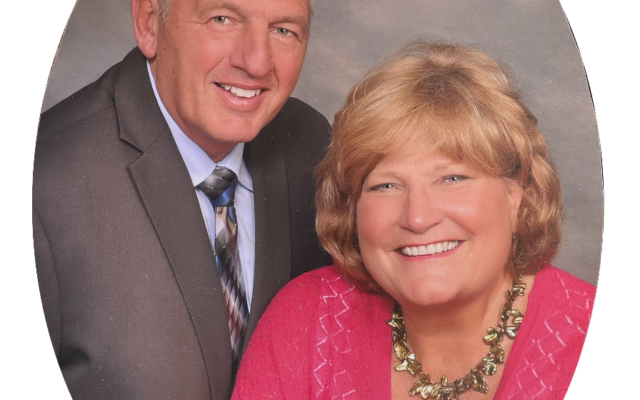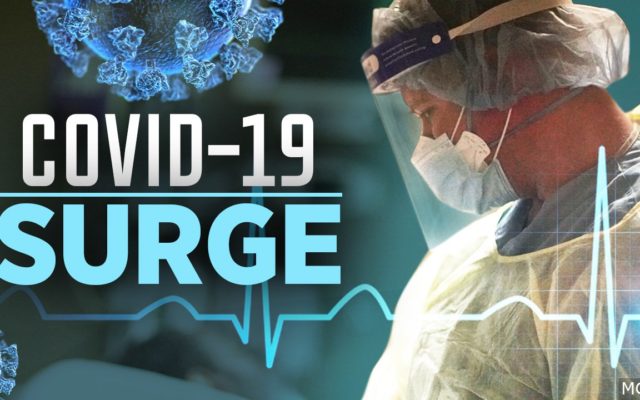
Now Scheduling Primary Care Appointments Online. Book Now.
Foresight, training help Dancer Wellness participants to prevent injury
MARSHALL – Kathryn Kennedy Grable knows it: Dancers are artists, but because they’re also athletes, they risk physical injury.
“I wanted to make our dancers stronger, especially for safety reasons and to enhance our program,” said Grable, who owns The Repertoire – A Center for Dance in downtown Marshall.
That’s why Grable is glad her students are working with Chuck and Lisa Middleton, who know a thing or two about health and fitness.
Chuck is a doctor of physical therapy and his wife Lisa is a physical therapist assistant/athletic trainer, both with Oaklawn Physical Rehabilitation Services.
Through a local effort linked to a broad-based, international “Dancer Wellness” project, the Middletons are training Grable’s students to prevent harm on the dance floor – and providing them with information about handling any mishaps.
The Middletons’ daughter, Ainsley, 11, began studying dance when she was 3 years old, and her parents became increasingly fascinated by – and involved in – issues linked to keeping dance students safe while practicing their art.
“Why wait until someone gets injured to try to fix them?” said Chuck. “Let’s keep them healthy to begin with, so the number of injuries stays low.”
“We watched these girls [at the Repertoire] grow up from a young age into these beautiful dancers,” Lisa said. “We thought that, before they graduate from high school, we could do a good service for the community by learning more about how to keep our dancers healthy so they can have a successful career.
“Many of them are going on to dance even after they graduate, so we want to give them the tools and the experience and knowledge to stay healthy,” Lisa said.
In late 2013, the Middletons conducted an initial assessment of Repertoire students who were interested in pursuing classes in pointe work, which calls for a dancer to support all body weight on the tips of fully extended feet.
“We had a pre-assessment in November 2013 – where dancers would come in if they were interested in taking pointe the following year,” Grable said. “Lisa and Chuck would look at their hips, their hip abduction and adduction – whether they were raising a hip when they’re doing certain movements, or dropping a hip.”
The Middletons also checked whether the dancers’ ankles were strong enough and their knees and hips properly placed during such movements as releves (going up on the balls of the feet) and sautés (jumping on one foot).
“They’re also looking at core strength, to make sure that the core can hold the body strong enough on the tips of their toes when they’re doing pointe,” Grable said. “They also look at the dancer’s pirouette – a turn on one foot – and control on landing.”
After the initial assessment, the Middletons gave the students strengthening and conditioning exercises for home study. A second assessment was conducted in early March to determine each participant’s progress. The results are being passed to Grable, who will use them to determine whether a student is ready to begin pointe classes safely in the fall.
“These are screenings,” Chuck said. “It’s different than an evaluation. We’re taking a snapshot of them in time, to see how they move well and how they don’t move well. We’re looking at a multitude of information to find trends – if an athlete has trouble with this type of movement, then he or she might end up with this type of injury. We’re trying to head that off at the pass.”
“Chuck, Kathyrn and I also have been figuring out how we want to assess students who are already currently enrolled in pointe classes to assess areas that they may need to work on to become better, stronger, healthier dancers,” Lisa said.
“We chose the Repertoire to develop this program because of that prior relationship and the comfort level,” Lisa said. “We hope to expand it elsewhere while learning how to best serve this population of dancers.”
During an evolving process over the past two years, the Middletons volunteered to screen each participating student from the Repertoire for their physical skills, their potential for growth as dancers, and to minimize their potential for injury.
Chuck Middleton also supervises Oaklawn’s free concussion-management screening program for regional students participating in school-sponsored athletic programs associated with possible head injury.
The Middletons offer free dance-injury screenings every other Monday for students at the Repertoire. Participants typically make appointments through the studio by email or phone.
Marina Fröehlich, 11, daughter of Kristen and Michael Fröehlich of Marshall, now is better prepared to study pointe this fall, her mother said.
“The best part of the program is that they were able to give her strengthening exercises and stretches to increase her flexibility and increase her strength,” Kristen Fröehlich said. “So, she [Marina] is able to effectively go up on pointe without risking getting hurt. That’s something that, as a parent, I would not have been able to show her.”
Marina has been studying dance since she was about 2½ years old, chiefly at the Repertoire.
“She has seen some improvement in some of the categories” since the Middletons began working with her daughter,” Kristen Fröehlich said. “As a parent, it’s nice to know that she is ready.”
While the Middletons now work primarily with students at the Repertoire, Chuck said the ultimate goal is to serve as many young athletes as possible. At some point, the Middletons hope to expand the screenings further to the hundreds of young dancers throughout the region.
“We’re looking at assessing older and intermediate pointe students as well to determine areas that they could work on to help be safe dancers and enhance their skills,” Lisa said. “We also are working on a general ‘Dancer Wellness’ screen to offer to all students – not just pointe but overall strength, flexibility and control.”
“I was the athletic trainer at Marshall High School for 15 years and it seemed there always were several young ladies in sports programs who also danced,” Chuck said. “It became clear they were dual-sport athletes throughout their seasons.
“Their bodies would have to endure the rigors of whatever sport they might be playing on the court, but they were also putting in a number of hours in the evening at the dance studio doing work just as vigorously as they would being doing in their team sports.
“That we needed to expand sports-medicine services to them was obvious. As we became more familiar with dance medicine as a concept, we found quite a bit out there in the culture for preventive medicine, corrective exercise and screening.
“We’ve worked with groups that do this on national and international levels, and we’re trying to bring their information to the dancers in the Marshall area,” he said.

